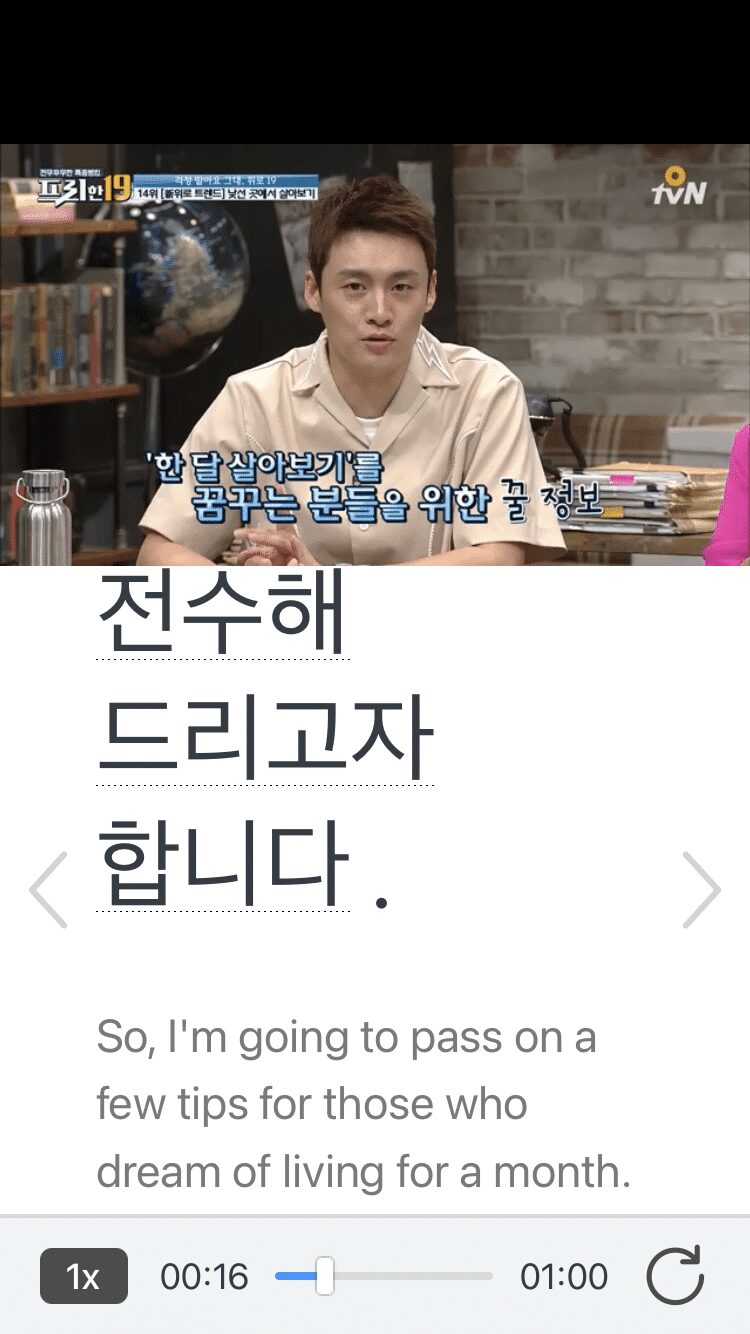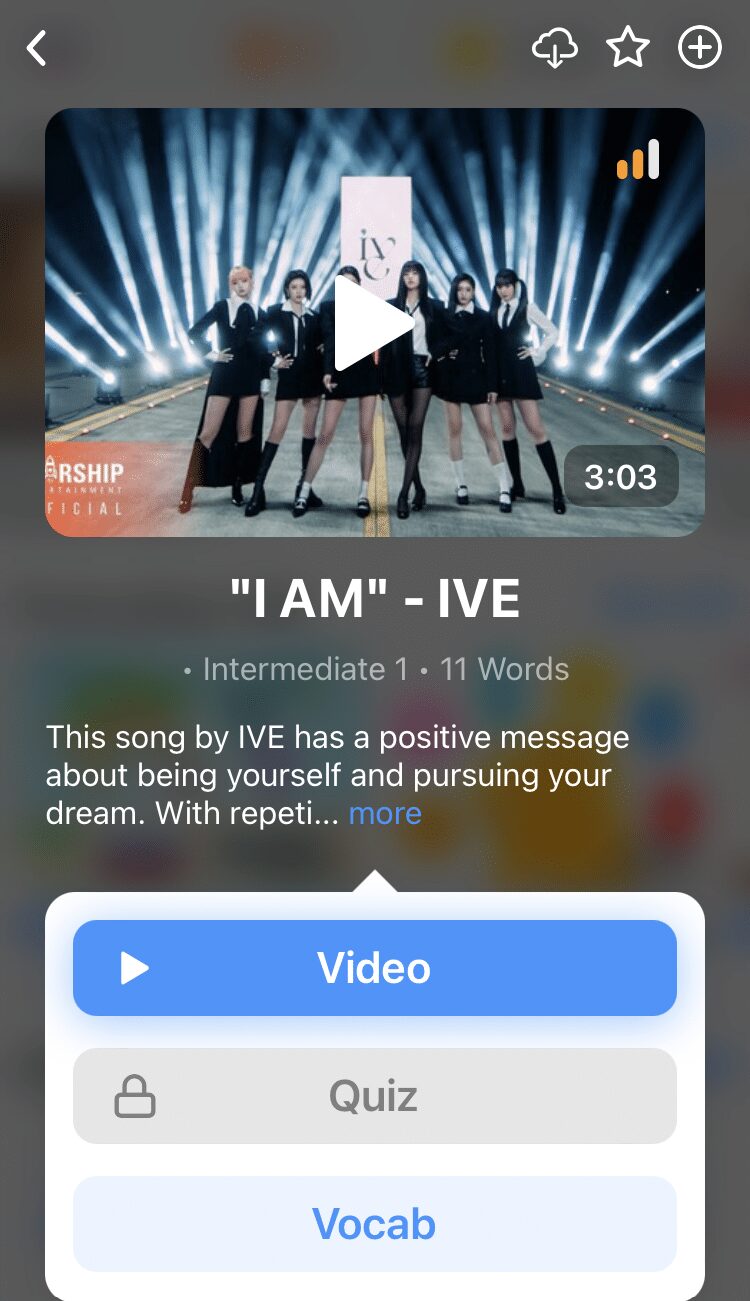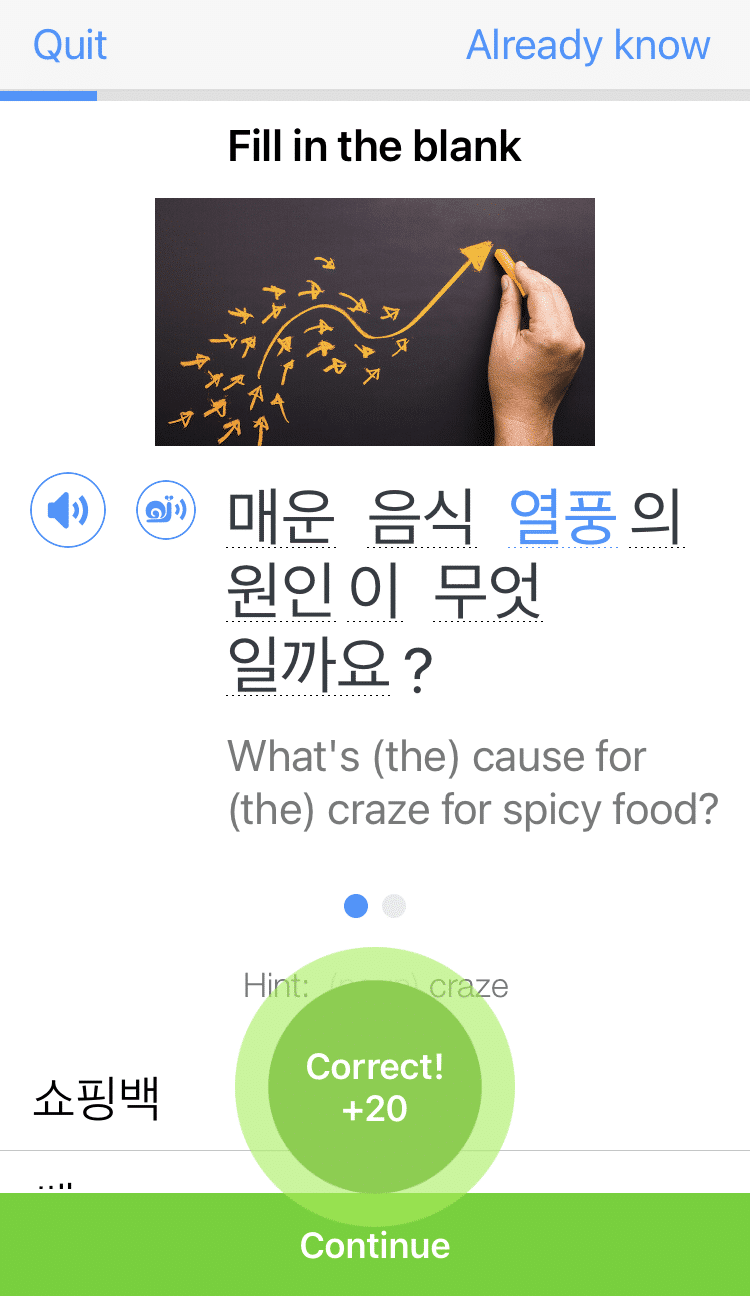Contents
- 1. Learn the basic Korean consonants (ㄱ, ㄴ, ㄷ, ㄹ, ㅁ, ㅂ, ㅅ, ㅈ, ㅎ)
- 2. Learn the basic Korean vowels (ㅏ, ㅓ, ㅗ, ㅜ, ㅡ, ㅣ)
- 3. Try reading in Korean!
- 4. Learn how to use the silent consonant (ㅇ)
- 5. Learn the Korean hard consonants (ㅊ, ㅋ, ㅌ, ㅍ)
- 6. Learn the Korean “y” sound (ㅑ, ㅕ, ㅛ, ㅠ)
- 7. Learn the Korean double consonants (ㄲ, ㄸ, ㅃ, ㅆ, ㅉ)
- 8. Learn the Korean double vowels (ㅐ, ㅔ, ㅒ, ㅖ)
- 9. Learn the Korean vowel clusters (ㅘ, ㅙ, ㅚ, ㅝ, ㅞ, ㅟ, ㅢ)
- 10. Practice reading full Korean sentences
- My tips for learning to read Korean from scratch
- And One More Thing...
How to Start Reading in Korean [Learn Hangul in 10 Steps]

Learning to read Korean is pretty straightforward, as I had it down in about one week.
The only slightly uncertain point is that not everyone seems to agree on how many letters there are in the Korean alphabet—some sources say 24, others say 40. Some “letters” in Hangul are made up of combinations of other letters, so the 24 are sort of like the “original” letters, while the others are like compound letters.
Regardless of the actual number of letters, the logical relationships that exist between letters make Hangul simple.
Below is meant to be a practical guide to get you up and running with reading, so I’m not going to fuss over details such as stroke order and spelling rules too much (though you may want to brush up on them at some point).
Download: This blog post is available as a convenient and portable PDF that you can take anywhere. Click here to get a copy. (Download)
1. Learn the basic Korean consonants (ㄱ, ㄴ, ㄷ, ㄹ, ㅁ, ㅂ, ㅅ, ㅈ, ㅎ)
In Korean, consonants have names that don’t correspond exactly to how they sound, just like in English. (W is pronounced “double-u,” for example, even though that’s not the sound the letter actually makes in words.) It’s probably most important at this stage for you to focus on the actual sounds, but I’ve included the letter names below too.
| Basic Korean Consonants | What It Sounds Like | Mnemonic |
|---|---|---|
| ㄱ | giyeok (hard "g" sound) | ㄱ is shaped like a gun. |
| ㄴ | nieun ("n") | ㄴ is not a bookend but rather a book-n. (I'm sorry, I know that's terrible.) |
| ㄷ | digeut ("d") | ㄷ looks like a divining rod. (I mean, sort of.) |
| ㄹ | rieul ("l" or "r") | ㄹ is a winding road, though maybe not as long as the one in the Beatles song. |
| ㅁ | mieum ("m") | ㅁ looks like a mouth (if you have a good imagination). |
| ㅂ | bieup ("b" or "p") | ㅂ looks like a bucket. |
| ㅅ | shiot ("s" or "sh") | ㅅ looks like a wave in the sea about to crash on the shore. |
| ㅈ | jieut ("j") | ㅈ sort of looks like two car bumpers right up against each other, which might happen in a traffic jam. |
| ㅎ | hieut ("h") | ㅎ could be a child's drawing of someone wearing a hat. |
Note: Any of the above sound explanations are only approximations, and that remains the case throughout this post. Also, letters can produce different sounds depending on their place in a word (which we’ll touch on a bit later).
2. Learn the basic Korean vowels (ㅏ, ㅓ, ㅗ, ㅜ, ㅡ, ㅣ)
Vowels don’t have names distinct from their sounds. They’re just called what they sound like.
| Basic Korean Vowels | What It Sounds Like |
|---|---|
| ㅏ | a ("ah") |
| ㅓ | eo (something between "oh" and "uh") |
| ㅗ | o ("oh," but more rounded) |
| ㅜ | u ("oo") |
| ㅡ | eu ("euh") |
| ㅣ | i ("ee") |
Since these are all based around a horizontal or vertical line, they might be a bit easier to remember right off the bat than the consonants.
3. Try reading in Korean!
Now, using your understanding of the sounds above, see if you can guess what the following word sounds like:
하나
When you think you have it figured out, click on the video below to hear it.
하나 means “one,” and, as you can hear, is pronounced hana.
Letters are read left to right, as in English, and there are two groupings of letters in the word above, each of which makes up one syllable. In Korean, syllables are divided into blocks.
Here’s another example where you can see this format at work.
머리 (head)
When you think you have the sounds for the above word worked out, click on the clip from the Pinkfong video below to hear if you’re reading it correctly.
Now, let’s try another word, this time just a single syllable block.
밥 (rice, meal)
Here we have three letters squeezed into one syllable.
Korean syllable blocks can contain anywhere between two and four letters. They’re read left to right and top to bottom.
So, in the case of 밥 (bap), the letters are read in this order: ㅂㅏㅂ.
First, you read the 바 on the top line of the block, then the ㅂ on the bottom.
4. Learn how to use the silent consonant (ㅇ)
In this next section, we’re only going to learn one letter. This letter is technically a consonant, but you might have trouble thinking of it that way because it doesn’t make a sound that we would normally associate with a consonant.
In fact, much of the time, it doesn’t make any sound at all.
The letter ㅇ (ieung) in Korean looks like “o” in English, and it plays a unique role in Korean syllables.
Remember: syllable blocks in Korean can contain anywhere between two and four letters. Sometimes, one of those syllable blocks can consist of a consonant followed by a vowel. Other times, it can consist of a consonant followed by a vowel that’s followed by another consonant.
But what if there’s a syllable that consists of just one vowel alone? Or, what if the syllable starts with a vowel?
Well, that can’t happen, and that’s where ㅇ comes in. When ㅇ precedes a vowel at the beginning of a syllable block, you can think of it as a placeholder of sorts. It accompanies the vowel in silence.
However, sometimes you’ll also see ㅇ after a vowel, at the end of a syllable. In this case, it’s pronounced like the “ng” sound in words that end in “ing” in English.
See if you can guess what the words below sound like before using the accompanying video clips to check yourself.
Here, we’re going to pick up a couple of family-related words from a Kebikids video.
엄마 (mom)
아기 (baby)
How did you do?
5. Learn the Korean hard consonants (ㅊ, ㅋ, ㅌ, ㅍ)
| Hard Korean Consonants | What It Sounds Like |
|---|---|
| ㅊ | chieut ("ch") |
| ㅋ | kieuk ("k") |
| ㅌ | tieut ("t") |
| ㅍ | pieup ("p") |
As you can see, these consonants resemble some of the ones we learned above. You may notice that their sounds also correspond somewhat. For example, if ㄱ is approximately like an English “g” sound, ㅋ (which looks like the same letter with an added line) can be thought of as a harder “k” sound.
Again, note that these sounds are only approximations and that ㄱ can also produce a “k” sound.
6. Learn the Korean “y” sound (ㅑ, ㅕ, ㅛ, ㅠ)
When you see two short parallel lines on a Korean vowel, the vowel is going to include a sound like the English “y.”
| Korean Letters With "Y" Sounds | What It Sounds Like |
|---|---|
| ㅑ | ya ("yah") |
| ㅕ | yeo (something between "yuh" and "yo") |
| ㅛ | yo ("yo," but more rounded) |
| ㅠ | yu ("yew") |
Now, we’re going to try something different. We’re going to practice reading with some words you already know in this humorous video where a couple tries to decide what to eat.
Try this one:
피자
Got it?
Click the clip below to hear it in Korean.
Now let’s try a longer one:
파스타
In the case of the word for “pasta,” you can see that in the middle syllable, 스 , the ㅅ is stacked on top of the vowel ㅡ . This is due to the nature of the vowel. ㅡ is a horizontal vowel, so it goes under the ㅅ rather than to the right of it.
And now, a word that incorporates one of those “y” vowels (hint: this one is also food):
라면
You got it, right?
In the Maangchi video below, you can hear the pronunciation confirmed.
And, you can also learn how to make some delicious Korean 라면 .
7. Learn the Korean double consonants (ㄲ, ㄸ, ㅃ, ㅆ, ㅉ)
You can probably sort of guess where this is going. These consonants are written as doubles of some of the basic consonants above and are pronounced with more emphasis than their single counterparts.
| Korean Double Consonants | What It Sounds Like | Romanization |
|---|---|---|
| ㄲ | ssanggiyeok | kk |
| ㄸ | ssangdigeut | tt |
| ㅃ | ssangbieup | pp |
| ㅆ | ssangshiot | ss |
| ㅉ | ssangjieut | jj |
8. Learn the Korean double vowels (ㅐ, ㅔ, ㅒ, ㅖ)
Here, we have some vowels that are made from previous ones put together:
ㅐ (ae) and ㅔ (e) are both pronounced sort of like “eh.” As far as pronunciation, they’re basically interchangeable. You just need to remember which words are spelled with which.
ㅒ (yae) and ㅖ (ye) are the same sort of deal. They’re virtually indistinguishable in modern pronunciation and are like the above letters with the “y” sound added.
9. Learn the Korean vowel clusters (ㅘ, ㅙ, ㅚ, ㅝ, ㅞ, ㅟ, ㅢ)
Okay, we’re on the home stretch! Here are some more vowel clusters that you’ll see in Korean words that you need to know how to pronounce.
| Korean "W" Vowels | What It Sounds Like |
|---|---|
| ㅘ | wa ("wah") |
| ㅙ | wae ("weh") |
| ㅚ | oe ("weh") |
| ㅝ | wo ("wuh" or "whoa" cut short) |
| ㅞ | we ("weh") |
| ㅟ | wi (a bit like the French "oui," with your lips rounded) |
| ㅢ | ui (a flatter "we" sound, with your lips spread out) |
As you can see, we once again have some vowel combinations here that sound the same—specifically three “weh’s”—but it’s important to know all of them for spelling purposes.
For a thorough rehashing of all of the combined vowel sounds above, check out this brilliant and entertaining video from Mina Oh of sweetandtastyTV that covers all the complex and compound vowels and throws in a mini Korean drama at the end.
In the video, you’ll notice that “Professor Oh” combines all the vowels with the consonant ㅇ, as this is how they would normally be written as syllables. With ㅇ, some of the vowels become complete words, such as 왜 (wae), which means “why.” You’ll also notice that in each case, the ㅇ takes the uppermost or leftmost position in the syllable, as it must precede the vowel.
10. Practice reading full Korean sentences
Now, let’s see how well you can read the words below. Here are a couple more words from our family video.
아빠 (dad)
가족 (family)
Now, here we have an example of what happens when you have a consonant-vowel-consonant syllable where the vowel in the middle is horizontal. Instead of having a consonant and a vowel on top followed by a consonant on the bottom, as with 밥 , we have a complete horizontal stacking of the letters in the second syllable of this word.
But can you pronounce it?
In the clip above, what’s actually said is 우리 가족이야 (uri gajok-iya), or “This is my family.” 우리 can mean “our” or “my” depending on the context, but don’t mistype it as 오리 (ori), like I just did, because that means “duck.”
Speaking of typing, you may have wondered if there was any particular pattern to how the letters in this post were arranged. I did try to teach the simpler letters first to make the complex ones that came later easier, but I also tried to lay them out in a way that would be logical for learning how to type.
For example, the first set of consonants in this post cover the left uppermost part of the keyboard in order and then jump down to the next row, also moving left to right. In other words, ㅂㅈㄷㄱㅅ is basically your Korean QWERTY (or QWERT, if you want to be picky about it), and I’ve introduced the letters in that order.
So, if you happen to pay attention to the order of the letters in this post or write them down in your own notes that way, hopefully this will make things easier once you start learning how to type.
Honestly, Korean typing is pretty logical and easy to begin with, so don’t hesitate to start typing Hangul now.
But on with our reading practice!
I’ll bet you can get this next one.
치킨버거
Okay, so there are a few 치킨 in the 치킨버거 from this Burger King commercial. But, that’s okay because now you know the words for 치킨 (chicken) and 버거 (burger). 치킨 is a useful word to know because fried chicken has quite the history in South Korea.
For your slang reference, 치맥 (chimaek) refers to the combination of chicken and beer and is a mashup of 치킨 and 맥주 (maekju — beer).
Let’s round things out now with one last phrase that will test much of what you’ve learned above and introduce a new concept:
This phrase, a useful one to know, is the polite version of “I’m okay” or “It’s okay.”
Let’s break this down:
With 괜 , we have the ㅙ between two consonants. That’s g, wae and n, which forms the sound gwaen.
With 찮 , we have a consonant cluster, or a series of two consonants, at the end. The rules for how to pronounce consonant clusters at the end of syllables get a bit complex, and we actually haven’t even really gotten into how consonants can change depending on their place in a word in general.
This video on 받침 (batchim, the final consonant in a Korean syllable), which is one of two from KoreanClass101, begins to go over some of these points.
For this particular word, all you need to know is that the ㅎ at the end is silent. So, 찮 is pronounced chan (like “chahn”).
The other two syllables should be easy for you to figure out at this point. The phrase can be used as a question to ask 괜찮아요? (Are you okay?)
And that’s pretty much it!
As we’ve already discussed, there are some instances in which Korean sounds change or aren’t completely consistent. One of the most common irregularities is that the consonants ㅅ, ㅈ and ㅊ, when used at the ends of syllables and followed by another consonant or when used at the end of a word, take on a “t” sound rather than the sounds they usually make. This can be seen in the spelled-out versions of their names:
시옷 (shiot)
지읒 (jieut)
치읓 (chieut)
The knowledge you’ve picked up from this post should be enough for you to start learning Korean words and sentences.
My tips for learning to read Korean from scratch
Get a deeper understanding of how Hangul works
As you’ve seen, Hangul is stacked into squares to form syllables. Each syllable must contain at least one vowel and one consonant, and must always begin with a consonant. The syllables are then joined together to form a word, just like in English.
Let’s use the word hangul as an example. In Korean, it’s written as 한글 . The first syllable 한 is spelled using the consonant ㅎ + the vowel ㅏ + the consonant ㄴ. The second syllable is spelled: consonant ㄱ + vowel ㅡ + consonant ㄹ.
One more thing to remember: in writing, every syllable stack must begin with a consonant, but some words and syllables are pronounced as beginning with a vowel like 안녕하세요 (annyeong-haseyo — hello). When this happens, the consonant ㅇ is silent.
Hangul | The Korean Alphabet | FluentU Korean
If you want to learn Korean, the best place to start is with the Korean alphabet! Hangul is a super straightforward writing system, so read this guide to find all about…
Memorize the alphabet in chunks
The best thing about learning on your own is you can go completely at your own pace. Maybe you’re desperate to start reading, and you have a free afternoon you can devote to learning all of the Korean letters at once. Go you! Run with it!
But for those of us who are busy and a little apprehensive about the prospect of learning a new alphabet, it’s perfectly fine to break things down a little bit.
Work out what’s manageable for you. I’d say you should set a minimum of five to ten letters to learn at a time, and give yourself the same time period to learn each group of letters (e.g., one week per group). Of course, you can increase the number of letters you learn in each time period as you become more confident.
Next, you should make a vocabulary list of words spelled using these letters. For example, if your first group of letters is going to be ㅏ, ㅗ, ㅜ, ㅠ andㅣand the silentㅇ, your vocabulary list might look like this:
아이 (a-ee or child)
우유 (oo-yoo or milk)
오이 (oh-ee or cucumber)
이 (ee or 2)
오 (oh or 5)
아이유 (a-ee-yoo or K-Pop idol IU’s name in Hangul)
Starting with this little list, you can learn another group of letters and build up your vocabulary per week. It works best if you alternate learning vowels and consonants to make it easier to find new words.
Learn pronunciations as you go
You’ll learn the letters faster—and remember them more easily—if you listen to the pronunciation as you learn each letter.
zKorean has a great chart demonstrating the appearance and sound of Hangul letters. It’s important, of course, to know the correct pronunciation of vowels as several Korean vowels are quite different from English ones. However, it’s also very important to know the correct pronunciation of consonants, because in Korean some consonants are pronounced differently depending on where they’re placed in a word.
For example, at the beginning of a word the letter ㅅ is pronounced with a “s” or “sh” sound, like in 사랑 (sarang — love) or 시간 (shigan — time), but at the end of the word ㅅ makes a hard “t” sound, like in 뭣 (mot — what).
While you’re learning, be sure to say the letters aloud every time you read them, until the sounds of the letters start coming to you more naturally. Read whole words aloud as you build up your vocabulary list. You may be sounding everything out letter-by-letter to begin with, but you’ll soon be reading whole syllables—and then entire words—quickly by sight.
Korean Pronunciation: How to Sound out Consonants, Vowels and Batchim | FluentU Korean Blog
Korean pronunciation got your tongue? Mastering Korean pronunciation is key to sounding more like a native speaker. Read this post to find out how to pronounce Korean…
Review what you’ve learned
Now it’s time for some good old revision. But it doesn’t have to be dull or repetitive! The best thing about learning how to read in Korean is that there are so many different ways to practice.
I’m old-fashioned: I love using paper flashcards and maybe you do, too! Or, you could give Anki’s digital flashcards a try and practice your reading while scrolling through your phone. You can also make use of the multimedia flashcards on the FluentU program.
FluentU takes authentic videos—like music videos, movie trailers, news and inspiring talks—and turns them into personalized language learning lessons.
You can try FluentU for free for 2 weeks. Check out the website or download the iOS app or Android app.
P.S. Click here to take advantage of our current sale! (Expires at the end of this month.)
Familiarize yourself with the letters by writing in Korean as much as possible, even if it’s only simple things like people’s names and lists of new vocabulary at the beginning. When you’re ready to make simple sentences, you can learn all about proper Korean punctuation here.
An Introduction to Korean Punctuation | FluentU Korean Blog
Korean punctuation doesn’t need to be intimidating. In fact, it’s very similar to the English punctuation you already know. Read this post for a full breakdown of Korean…
Or you could even try writing in “hanglish” (English words and sentences using Hangul) if your vocabulary still needs sprucing up. It’s a surprisingly funny way to write, especially when you read it all aloud at the end.
Read the things that really interest you. Why did you want to learn how to read in Korean to begin with? Start working toward that as early as possible.
If you like Korean pop culture, follow idols and actors on their social media. For example, you can go on Instagram and follow G-Dragon (@xxxibgdrgn), EXO’s Chanyeol (@real__pcy) and CL (@chaelinCL).
You’re all set to start typing, speaking and learning Korean.
Good luck!
Download: This blog post is available as a convenient and portable PDF that you can take anywhere. Click here to get a copy. (Download)
And One More Thing...
If you enjoyed this post, you're already halfway to having the time of your life learning Korean with FluentU!
FluentU makes it possible to learn with K-pop videos, funny commercials, entertaining web series and more. Just a quick look will give you an idea of the variety of FluentU videos on offer:

FluentU really takes the grunt work out of learning languages, leaving you with nothing but engaging, effective and efficient learning. It's already hand-picked the best videos for you (which are organized by level and topic), so all you have to do is simply choose any video that strikes your fancy to get started.
Each word in the interactive captions comes with a definition, audio, image, example sentences and more.

Access a complete interactive transcript of every video under the Dialogue tab, and easily review words and phrases from the video under Vocab.

You can use FluentU’s unique Quiz Mode to learn the vocabulary and phrases from the video through fun questions.

FluentU keeps track of what you're learning, and tells you exactly when it's time for review, giving you a 100% personalized experience.
Review sessions use video context to help embed the words in your memory.
Start using the FluentU website on your computer or tablet or, better yet, download the FluentU app from the iTunes or Google Play store. Click here to take advantage of our current sale! (Expires at the end of this month.)








